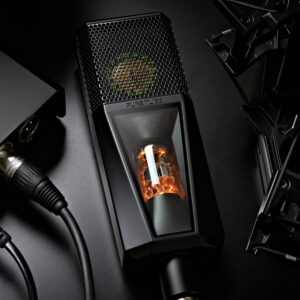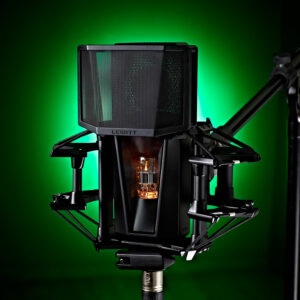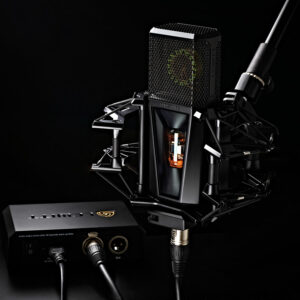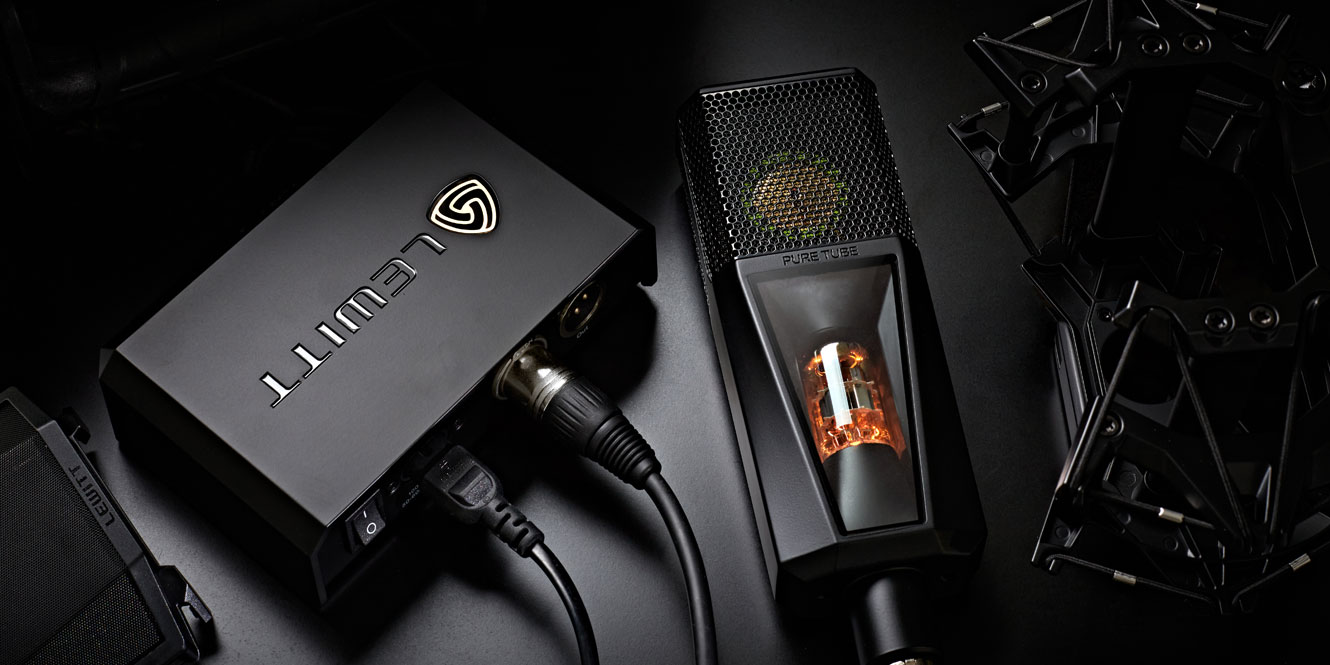Austrian microphone manufacturer Lewitt have just launched the next step in tube microphone technology with Pure Tube. An extremely fresh take on the classic, vintage character of tube mics, let’s take a closer look at what makes this product unique.
Introducing the Lewitt Pure Tube
 Lewitt’s latest microphone, Pure Tube is a fresh take on tube microphones.
Lewitt’s latest microphone, Pure Tube is a fresh take on tube microphones.
One large flaw of tube microphones is their noise floor, and while this has improved with the advancement of components over the years, solid-state microphones still maintain the advantage of low noise floor over tube mics.
Pure Tube has been designed to have ultra-low noise floor, like solid-state microphones. With a gold-sputtered condenser capsule and a transformer-based filter which reduces the proximity effect, this mic balances the warm, smooth, saturated sound of traditional tube mics with the cleanliness of solid-state designs.
So, how have Lewitt achieved this? By completely removing any semiconductors and capacitors from the mic’s circuitry, they’ve eliminated anything that could affect the electrical current flowing through the microphone, letting the specifically selected ECC82 and 12AU7 tubes do their thing with no interference.
This unique design has given the Pure Tube a noise floor of 7 dB, which is over half the value of many other popular tube mics.
The Pure Tube comes as an essential set, containing the microphone, power supply, mount, 7-pin XLR cable for running the power supply, and a transport bag. There’s also a studio set, which adds a shock mount, magnetic pop filter, and a heavy-duty transport case.
What’s a tube microphone?
 Tube microphones are large-diaphragm condenser microphones with a unique twist in their amplification stage. They utilise triode vacuum tubes to boost signals, providing a smooth sound with a distinctive, pleasing low level of harmonic distortion – referred to as saturation.
Tube microphones are large-diaphragm condenser microphones with a unique twist in their amplification stage. They utilise triode vacuum tubes to boost signals, providing a smooth sound with a distinctive, pleasing low level of harmonic distortion – referred to as saturation.
Whilst the idea of good-sounding distortion in a microphone may seem counterintuitive at first, this effect is very subtle. It emphasises natural harmonics in the sound to help it stand out. As a result, tube microphones have become extremely popular for vocals.
This microphone design became common in the late 1920s, with one of the first being produced by Neumann in 1928 – the CMV3.
From there, a wide range of tube microphones were built by early audio companies like Western Electric, and RCA followed suit. Tube microphones were very much standard in recording and broadcasting.
Since it wasn’t until 1947 that Bell Laboratories came up with point-contact transistors, which were smaller, cheaper, and didn’t need external power supplies, solid-state microphones quickly became more common.
However, Neumann produced the ever-popular U47 the following year and proved that tube microphones hadn’t become obsolete by this new development.
Ever since, whilst transistor-based microphones are more lightweight, affordable, and convenient, tube microphones have been used to capture particular instruments like kick drums, snare, acoustic guitar, and – especially – vocals. From Dolly Parton to Led Zeppelin, Pink Floyd to Jay-Z, tube microphones have maintained their place in professional recording studios to this very day.
Some notable models include the U47 and U67 by Neumann, the Telefunken ELA M 251, the AKG C12, the Sony C-800G, and the Manley Reference.
Who are Lewitt Microphones?
 A relatively young microphone company, Lewitt were founded in 2009.
A relatively young microphone company, Lewitt were founded in 2009.
Drawing on the rich history of Austrian microphone manufacturing, Lewitt’s mission is to make high-quality microphones affordable and accessible to everybody.
After working for some larger companies, founder Roman Perschon found that he wanted to pursue some fresher ideas and push his take on microphone design forwards.
As a result, Lewitt have released many notable microphones in just a short amount of time. And now, they’ve been turning their attention to modernising the classic sound of tube microphones.
This new innovation comes fresh off the heels of their extremely advanced LCT1040, which blended FET and tube circuitry with various different voicings, circuitry blending, and polar patterns.
Unique features and sleek modern looks make Lewitt mics a popular and often affordable choice for both live and studio recording.













0 Comments